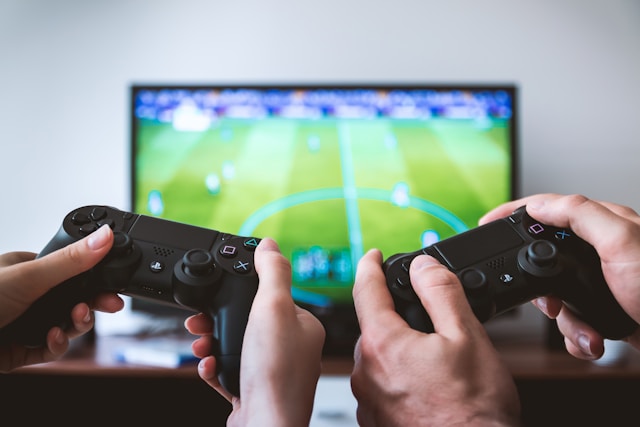- Change theme
How Video Games Are Quietly Reshaping Real-World Sports Training

People used to laugh at the idea. Video games? Helping athletes? It sounded ridiculous not long ago. But that’s changing. And fast.
02:02 30 July 2025
People used to laugh at the idea. Video games? Helping athletes? It sounded ridiculous not long ago. But that’s changing. And fast. You walk into a modern training facility today, and there’s a good chance you’ll spot a console, a VR headset, maybe even a reaction-speed game running in the corner.
It's not just kids or gamers anymore. Coaches and trainers are using gaming tools to train professionals. And not just for entertainment — for real improvement. What used to be “just a game” is now part of the sports toolkit. If you want to dive deeper into how this actually plays out — from cognitive training to spatial awareness — read more about how online game mechanics are showing up in serious athletic environments.
Why Coaches Are Taking It Seriously
At first, it might look like a gimmick. But when you think about it, games do something that traditional drills sometimes don’t — they challenge the brain. And fast. A well-designed game pushes timing, decision-making, awareness, and even discipline. It can be paused, replayed, adjusted — and it gives feedback instantly. That’s something even real-life scrimmages can’t always do.
Athletes aren’t using games to replace training. They’re using them to sharpen what they already do. Especially in sports where one second — or even half a second — makes the difference.
What Games Actually Train
Let’s be clear: video games aren’t building muscle or improving VO2 max. But they’re not trying to. Their power is mental. They help athletes get better at reading situations, spotting movement, adjusting instinctively — all things that matter under pressure.
A few areas where games are proving useful:
- Reaction training: Games that demand split-second responses sharpen reflexes in ways that treadmill drills just can’t.
- Spatial awareness: Moving in a 3D space — especially in VR or first-person games — builds a stronger internal map, useful in fast team sports.
- Pattern recognition: Repetitive exposure to certain plays or behaviors — common in sports games like FIFA or NBA2K — builds a quicker tactical eye.
Some athletes even report that gaming helps them handle stress. The high-stakes, fast-response nature of competitive gaming mimics pressure moments in real sports — minus the physical wear and tear.
Types of Games That Help the Most
Not all games are useful. The ones that translate best usually have tight mechanics and demand precision. Fast thinking. Clean decision chains.
Here’s what shows up most in training environments:
- Simulation games: Think football managers, racing simulators, or realistic tennis engines. They work when used intentionally.
- Cognitive training apps: Not quite “games” in the entertainment sense — but built like games. They target memory, concentration, and response.
- VR reaction tools: These are becoming more common. Boxing, hockey, even golf are now using headset-based drills to practice without contact.
And then there’s the indirect stuff — coordination, confidence, rhythm. Some games train that too, though less obviously.
What to Watch Out For
Of course, this isn’t magic. Playing a few rounds of Call of Duty isn’t going to turn someone into an elite sprinter. Like anything in training, it depends on how it’s used.
Some common mistakes to avoid:
- Relying too heavily on games: They’re tools, not solutions. They work best alongside real movement.
- Choosing the wrong format: Not every flashy app trains useful skills. It has to be specific.
- No expert guidance: Without a coach or sports psychologist, it’s easy to misuse these platforms.
Athletes need feedback loops that match their goals. Games can offer those — but only with smart setup.
This Is the Beginning, Not a Fad
People once said video games were the opposite of sport. That they pulled kids away from movement. But what we’re seeing now flips that idea. The mechanics behind games — repetition, progress tracking, decision pressure — are incredibly close to what high-level athletes deal with on the field.
And that’s the irony. The thing once blamed for “wasting time” is now helping professionals use their time better. In recovery, in rehab, in performance training. And honestly? It’s just getting started.
